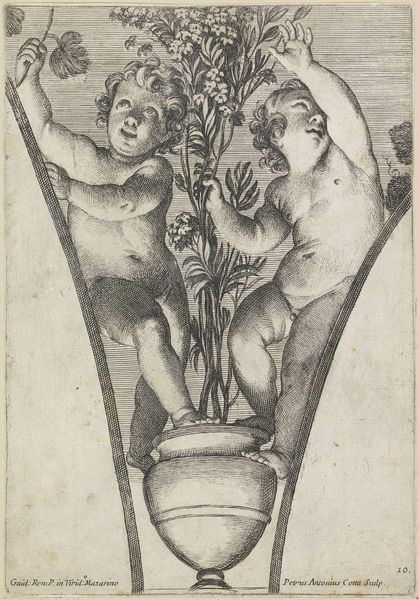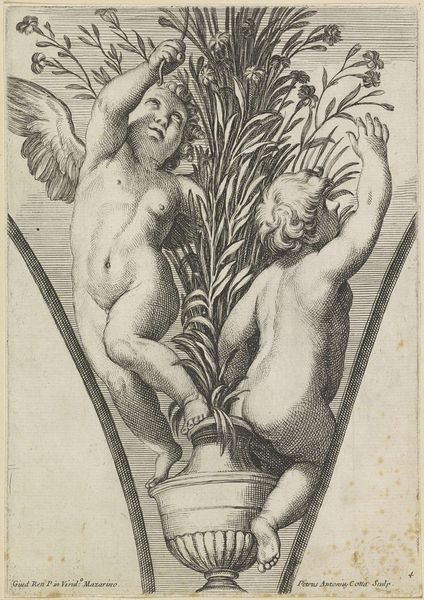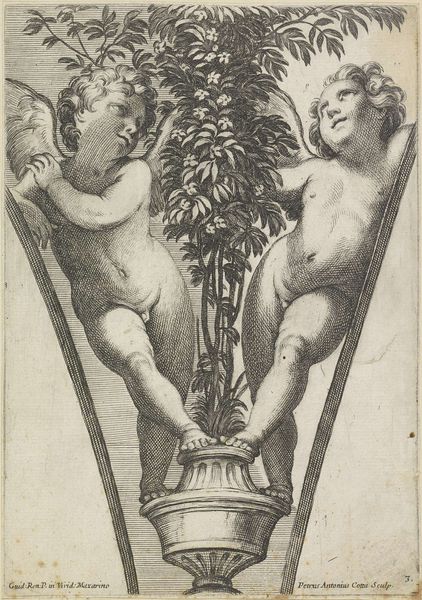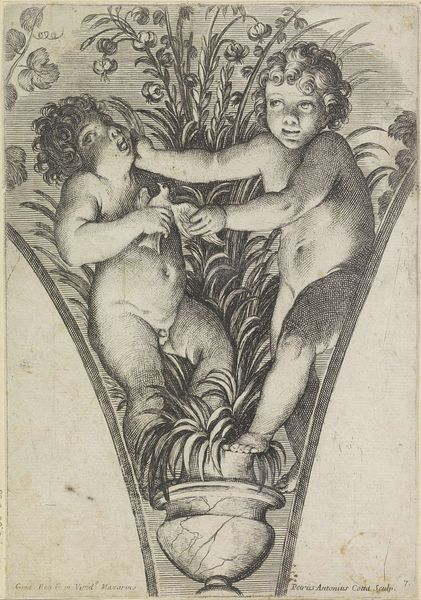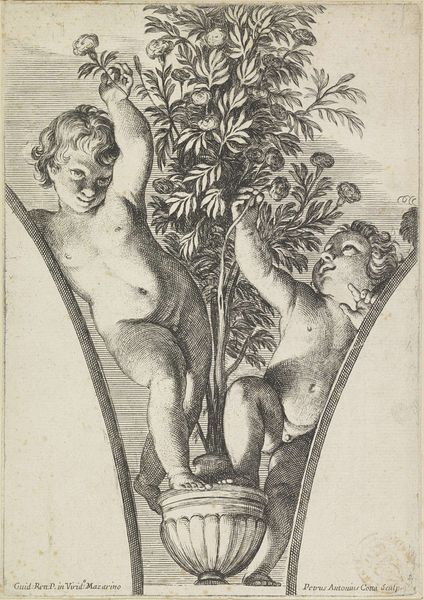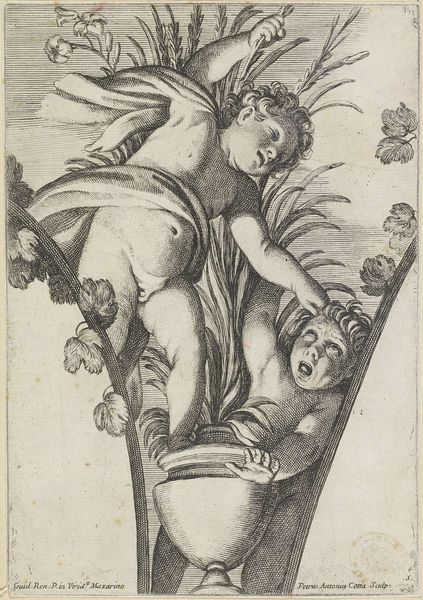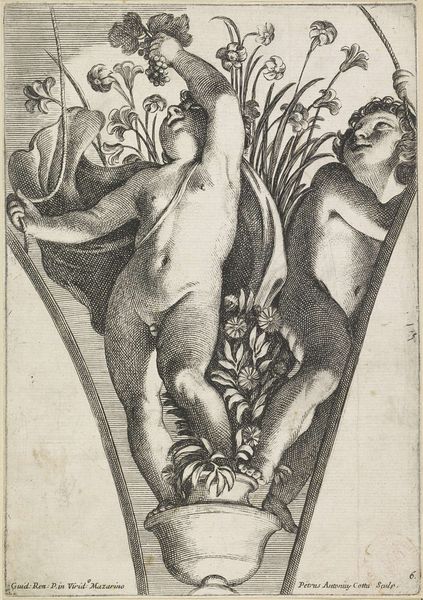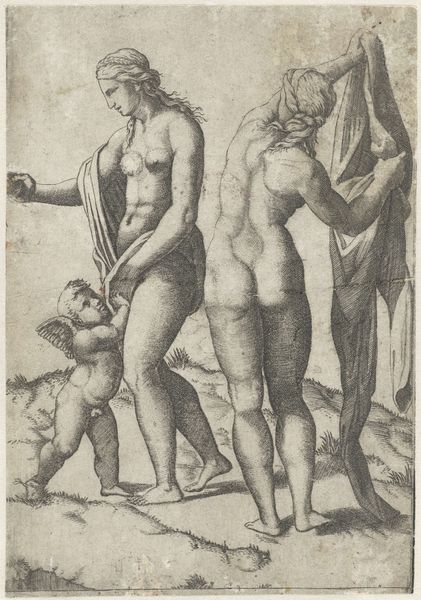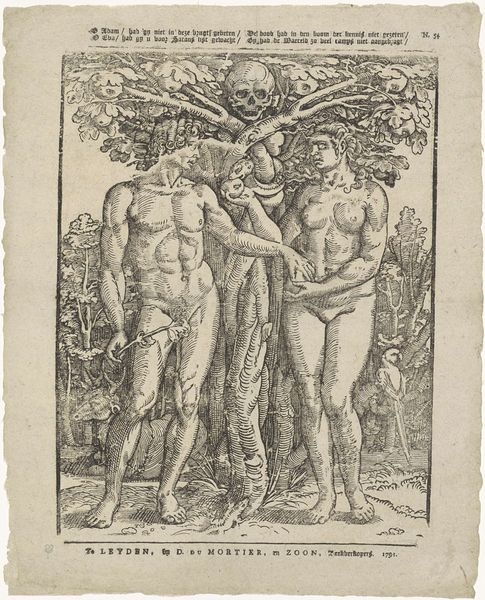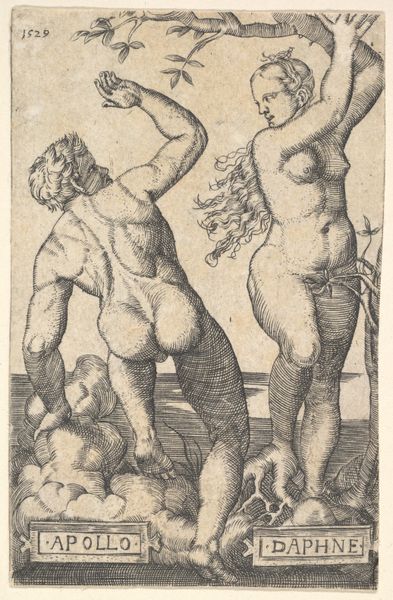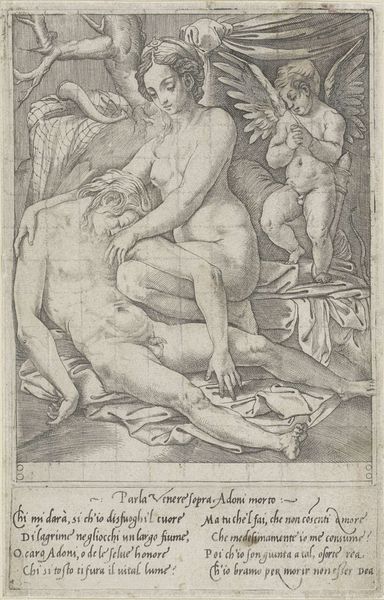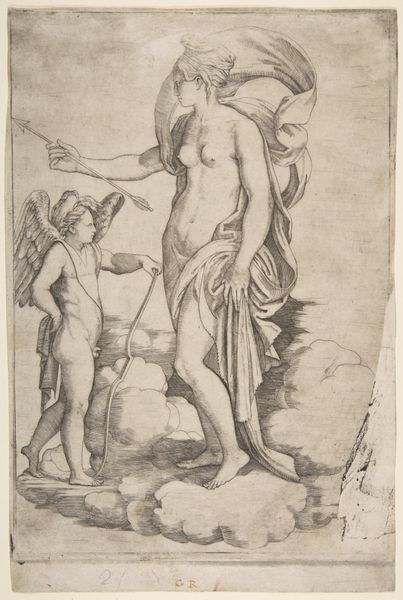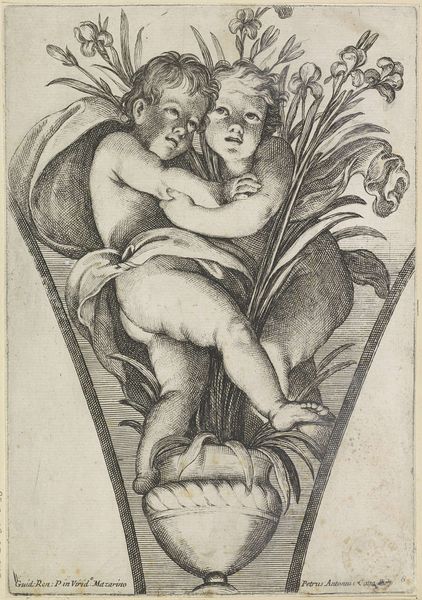
engraving
#
baroque
#
figuration
#
genre-painting
#
engraving
Dimensions: height 265 mm, width 182 mm
Copyright: Rijks Museum: Open Domain
Pietro Antonio Cotta made this etching of two putti by a potted plant. We might see the image as a simple decoration, but it is important to consider its cultural origins in early modern Europe. The image creates meaning through its visual codes, like the putti themselves, which reference classical antiquity and the Italian Renaissance. The image of chubby, nude male infants evokes innocence and divinity. Cotta was active in Rome in the 17th century, where the Catholic church was a major patron of the arts. The rediscovery of classical antiquity led to a vogue for Greco-Roman imagery in both religious and secular art. Institutions such as the Papal Court also fostered the growth of a printmaking industry. Images such as this were consumed by wealthy elites, and so catered to the tastes of a sophisticated but conservative audience. Understanding the role of institutions in shaping the production of art is central to the work of the historian. By consulting historical sources, we can better understand the meaning of art as something that is contingent on its social context.
Comments
No comments
Be the first to comment and join the conversation on the ultimate creative platform.
